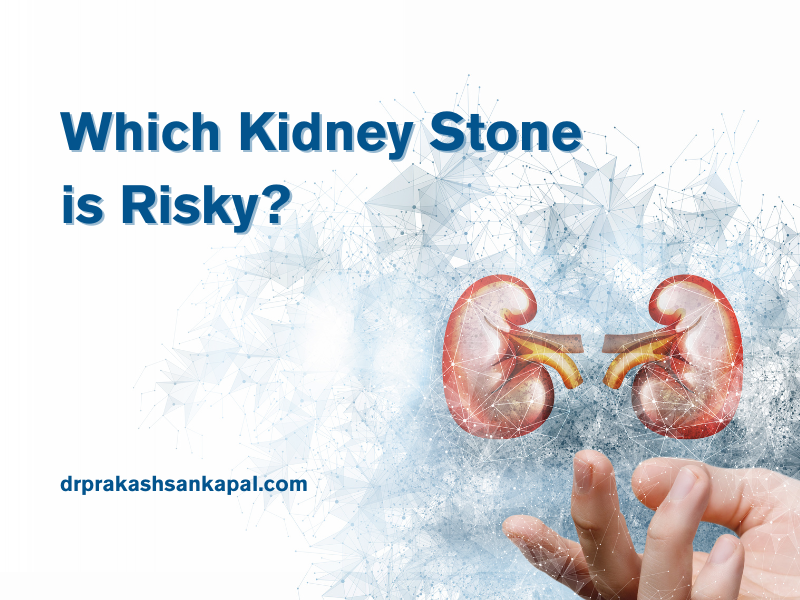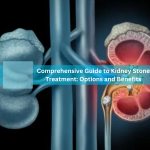Kidney stones can be a painful and distressing experience, affecting people of all ages. However, not all kidney stones are created equal. Some types are more dangerous than others, potentially leading to severe health complications. In this blog post, we will explore the different types of kidney stones, identify which ones are the most risky, and provide valuable insights into their treatment and prevention.
What are Kidney Stones?
Understanding Kidney Stones
Kidney stones are hard deposits made of minerals and salts that form inside the kidneys. They can vary in size and shape, and their composition can differ based on dietary habits, genetics, and underlying medical conditions. The main types of kidney stones include calcium stones, uric acid stones, struvite stones, and cystine stones.
Common Symptoms
Common symptoms of kidney stones include severe pain in the back or side, blood in the urine, nausea, vomiting, and frequent urination. If you experience any of these symptoms, it is important to seek medical attention promptly to determine the cause and appropriate treatment.
Types of Kidney Stones
Calcium Stones
Calcium stones are the most common type of kidney stones, accounting for about 80% of all cases. They are primarily composed of calcium oxalate or calcium phosphate. While calcium stones are common, they can be managed effectively with proper hydration and dietary modifications.
Uric Acid Stones
Uric acid stones form when there is too much uric acid in the urine. They are more common in people with gout or those who consume a high-protein diet. Uric acid stones can be dissolved with medications that alkalize the urine, making them less risky compared to other types.
Struvite Stones
Struvite stones, also known as infection stones, are caused by urinary tract infections. They can grow rapidly and become quite large, often requiring surgical intervention. Struvite stones are considered more dangerous due to their potential to cause severe infections and kidney damage if left untreated.
Cystine Stones
Cystine stones are rare and occur in people with a genetic disorder called cystinuria, which causes cystine to leak into the urine. These stones can be difficult to manage and often recur, making them one of the more risky types of kidney stones.
Which Kidney Stone is the Riskiest?
Struvite Stones
Among the different types of kidney stones, struvite stones are considered the most dangerous. Their rapid growth and association with urinary tract infections can lead to serious health complications. Struvite stones can cause chronic infections, kidney damage, and even sepsis if not treated promptly. Surgical removal is often necessary, and long-term management includes preventing infections to avoid recurrence.
Cystine Stones
Cystine stones are also risky due to their genetic nature and tendency to recur frequently. Managing cystine stones requires a combination of dietary changes, medications, and regular monitoring. Because of their recurring nature and difficulty in treatment, cystine stones can pose a significant health risk over time.
Treatment Options for Risky Kidney Stones
Medical Management
For struvite and cystine stones, medical management is crucial. This includes antibiotics to treat infections for struvite stones and medications to reduce cystine levels in the urine. Regular follow-ups with a healthcare provider are essential to monitor progress and adjust treatment plans as needed.
Surgical Interventions
Surgical interventions may be necessary for large or problematic stones. Common procedures include:
Extracorporeal Shock Wave Lithotripsy (ESWL): Uses shock waves to break stones into smaller pieces that can be passed naturally.
Ureteroscopy: Involves a thin scope to locate and remove stones or break them up with a laser.
Percutaneous Nephrolithotomy: A minimally invasive surgery to remove large stones directly from the kidney.
Prevention Strategies
Hydration
One of the most effective ways to prevent kidney stones is to stay well-hydrated. Drinking plenty of water helps dilute the substances in urine that lead to stone formation.
Dietary Modifications
Dietary changes can also play a significant role in preventing kidney stones. Reducing sodium intake, limiting animal protein, and avoiding foods high in oxalates can help reduce the risk of stone formation.
Regular Medical Check-ups
For individuals with a history of kidney stones, regular medical check-ups are crucial. Monitoring kidney function and making necessary lifestyle adjustments can help prevent recurrence and manage any existing stones effectively.
Conclusion
Kidney stones are a common medical condition, but some types are riskier than others. Struvite and cystine stones, in particular, can lead to serious health complications if not managed properly. Understanding the different types of kidney stones, their risks, and treatment options can help individuals make informed decisions about their health. By staying hydrated, making dietary changes, and seeking regular medical care, it is possible to prevent and manage kidney stones effectively.
Engaging FAQs
Common symptoms of kidney stones include severe pain in the back or side, blood in the urine, nausea, vomiting, and frequent urination. If you experience these symptoms, seek medical attention promptly.
Yes, reducing sodium intake, limiting animal protein, and avoiding foods high in oxalates (like spinach and nuts) can help prevent kidney stones.
Yes, staying well-hydrated is one of the most effective ways to prevent kidney stones. Drinking plenty of water helps dilute the substances in urine that lead to stone formation.
Struvite stones are considered the most dangerous due to their rapid growth and association with urinary tract infections, which can lead to severe complications if left untreated.
Treatment options include medical management with medications, surgical interventions like ESWL, ureteroscopy, and percutaneous nephrolithotomy, and preventive measures such as hydration and dietary changes.





